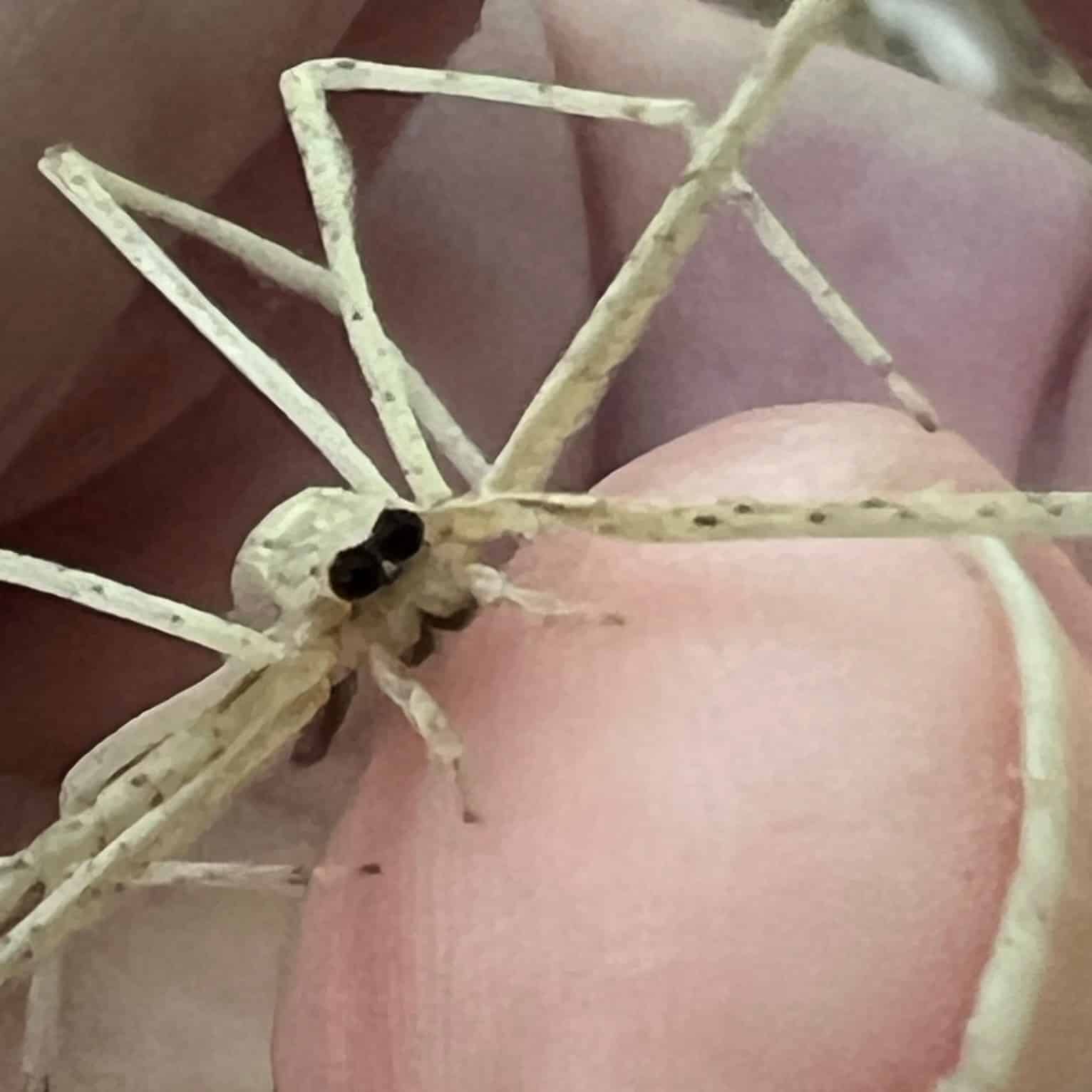Most folks who know me, know that I love spiders…and some snakes (cue that song of old), but mostly spiders. And what’s not to love? Like the eyes of the Ogre-faced Spider. Hard to miss this prominent feature on any critter. It was indeed the first clue that made me realize that I had found my very first of these cool spiders.
Sadly, some of my friends do not share my enthusiasm. Sorry, Lee, Sarah, and – well, you know who you are. My wife Mary tolerates them as long as they do not sneak up on her. I have relocated a few in our 45 years together, mostly unharmed.
As with most groups of critters, the body parts of spiders say much about how they go about their lives. In the case of the Ogre-faced Spider, the eyes stand out. They are much larger than the remaining six eyes that help these spiders navigate the world. These large eyes help this spider detect their prey that they snag with a small, square web, built between their outstretched front legs, like a fisherman throwing a net.

Unlike most web-building spiders, that build webs stretched between plant stems or other solid objects, this spider carries its web with it. Online photos are common, showing what looks a bit comical at first, but makes sense when you understand how it works.
These nocturnal hunters build their nets after dark and hang down from a temporary silken base on a branch. Those eyes, along with sensory organs in their front legs, help detect walking or flying prey. The net is thrown at the quarry, either forward for walking targets, or backward or sideways for flying ones. Once ensnared, the spider uses more silk to wrap up its prize for a leisurely meal.
During the day, these spiders stretch out on a branch, front two pairs of legs forward, with the rear pairs backward – looking just like the twig, their long legs serving another important function.
As for their common name, the darkness of their large eyes resembles that of ogres in fairy tales. They are in fact eerily dark but are adapted to detecting objects in low light, reportedly being able to absorb 2,000 times more light than jumping spiders that have similarly large eyes.
Jumping spiders are a large family of spiders that also have unusually large eyes. As with the Ogre-Faced Spider, their two large eyes are used to orient toward prey, ahead of a powerful leap to grab and suppress their meals. Same function with a different means of capture, during daylight.
For Ogre-faced Spiders, their eyes are the key to their way of life, hanging about in the dark, and hurling a net of silk held between their legs. How cool is that?
Hope to see you in our great outdoors!